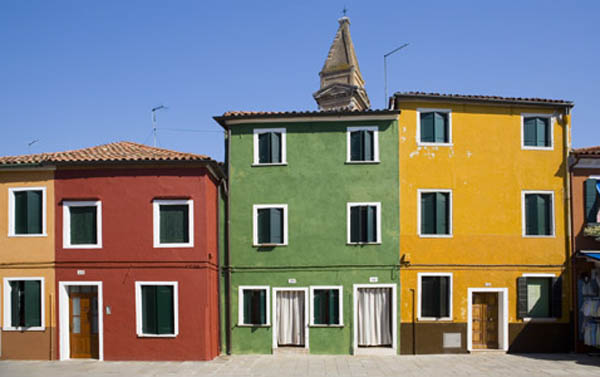A chore most people hate but is one of the most cost effective for keeping your house in good condition is keeping up the outside paint. Paint acts as a sealant for keeping out the 3M’s: mold, mildew and moisture.
This layer of protection keeps wood from rotting and water from getting in that can damage the inside or cause health issues, it even helps protect against insect invasion. By keeping your paint maintained, you can also save yourself thousands of dollars in repairs from having to replace damaged wood.
Paint Maintenance
Now there are ways to help your paint last longer that is easier than painting the home. Keep shrubs and tree limbs cut away from the home so they are not damaging the paint by rubbing or scratching through the coating. Washing the dirt and grime off your home at least once a year (twice is better), will help the paint last longer as well.
You can accomplish this task by using a pressure washer (make sure you don’t use too much pressure or you can damage the paint this way as well) or using a hose with a scrub brush and soap. With proper care, the average outside paint coat will last five to eight years depending on brand and quality.

Buy Quality Paint
Speaking of paint quality, buying a good paint is another way to stop having to paint so often. It also holds up better to the weather elements and most work harder to protect your home. Your home is an investment and paint is one of the cheapest ways to protect that investment (it’s also one of the cheapest ways to do a complete home makeover), so purchase quality paints and primers.
Best Painting Seasons
Spring and fall are the best times of year to paint the outside of your home for both you and the home. The days are warm without being too hot or cold or too sunny. Direct hot summertime sun will ruin paint as it’s drying, so don’t paint in the summertime. Wintertime in many areas is often too cold unless you live in a mild climate. Paint when it’s comfortable outside so the job is less stressful for your body as well (you can remind yourself that by painting you are giving yourself a great workout).
Cleaning and Prepping for Paint
Two things to do before starting to paint are to clean and prep the surface and to fix any problems such as water damage, chalking, peeling paint, mildew or rust. Walk around the house and examine it closely for any of these issues. If you find them, correct before painting. Apply a new coat of chalk around windows and drains. The paint will cover the chalk and act as more sealant and you probably haven’t applied new since the last time you painted. Wash the home with soap, water and a scrub brush or use a power washer to clean.
Remove or Cover Accessories
Remove any covers, screens, shutters, wall mounted fixtures, mailbox, and street numbers or down spouts that you can. This will make the painting process easier because you don’t have to worry about getting paint on these things. If you can’t remove them, cover them with plastic and painter’s tape. If you’re using a paint sprayer to paint the house, you also want to cover windows and doors with plastic. Finally cover the plantings around the home with a drop cloth to prevent paint from getting on them.
Paint/Primer Time
You are now ready to start with paint and primer. Just remember to always use the same kind of paint that is on the home such as latex to latex, oil to oil, etc. so t the paints stick to the last layer. If this is first coat on the home, you need to apply a layer of primer before the paint, don’t skip this step. If it’s a repeat coat, make sure you use primer in any location the paint was scraped through by plants damage, paint scraping or repairs. You can also use the paint/primer combined paints to apply more protection.
Always mix all the paint cans together before painting to ensure a consistent color over the entire home (each batch tends to vary slightly in color). And always get the right tools for the job whether using rollers, brushes and ladders or a paint sprayer. Protect yourself by wearing eye protection and clothing that won’t matter if paint gets on it.
Start your painting after the house is dry in the morning from any moisture or dew from the night before. Start on the side getting the morning sun first and then follow the sun around the home for the day to ensure the best drying and light for working. Always finish a wall, don’t stop in the middle or you will get lap marks. If you need to use a ladder, make sure the ladder is set securely and don’t lean off the sides of the ladder to paint more, move it instead. Finally paint the flat walls first and do the trim last. Once you’ve hit the trim painting, you know you’re in the home stretch and almost done.
Take your time with your outside painting to get it right and it will reward you with years of protection. Go the extra step, keep your paint clean and you’ll get even more life out of it.

